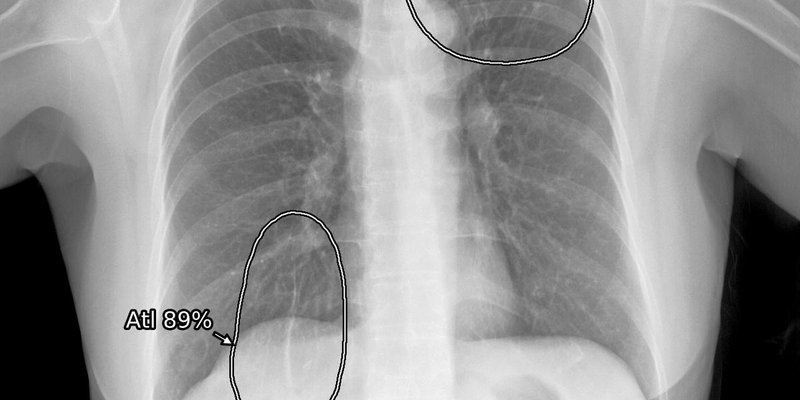
Due to the high volume of chest radiographs, substantial time can be saved by expediting reporting or even removing the normal chest radiographs from the routine clinical workflow. In this retrospective analysis, 1670 consecutive chest radiographs from two medical centres were analysed by the commercially available AI system Lunit INSIGHT CXR3. The AI system was reported here to have achieved an AUC of 0.92 for the detection of normal chest radiographs. The authors showed that half of the normal chest radiographs could be identified by AI at a clinically acceptable threshold, while remaining very sensitive to urgent and critical findings (obtaining a negative predictive value of 98%). In that context, the AI system seems to hold the potential to reduce the workload for radiologists by 15%. However, the authors reported that this workload reduction calculation can be dependent on several factors, such as the quality of the AI system or the chosen operating point of the AI system. Important to note: the AI is commercially available, but not CE-marked to perform automated detection of normal chest radiographs.
Read full study
Performance of AI to exclude normal chest radiographs to reduce radiologists’ workload
European Radiology, 2024
Abstract
Objective: This study investigates the performance of a commercially available artificial intelligence (AI) system to identify normal chest radiographs and its potential to reduce radiologist workload.
Methods: Retrospective analysis included consecutive chest radiographs from two medical centers between Oct 1, 2016 and Oct 14, 2016. Exclusions comprised follow-up exams within the inclusion period, bedside radiographs, incomplete images, imported radiographs, and pediatric radiographs. Three chest radiologists categorized findings into normal, clinically irrelevant, clinically relevant, urgent, and critical. A commercial AI system processed all radiographs, scoring 10 chest abnormalities on a 0–100 confidence scale. AI system performance was evaluated using the area under the ROC curve (AUC), assessing the detection of normal radiographs. Sensitivity was calculated for the default and a conservative operating point. the detection of negative predictive value (NPV) for urgent and critical findings, as well as the potential workload reduction, was calculated.
Results: A total of 2603 radiographs were acquired in 2141 unique patients. Post-exclusion, 1670 radiographs were analyzed. Categories included 479 normal, 332 clinically irrelevant, 339 clinically relevant, 501 urgent, and 19 critical findings. The AI system achieved an AUC of 0.92. Sensitivity for normal radiographs was 92% at default and 53% at the conservative operating point. At the conservative operating point, NPV was 98% for urgent and critical findings, and could result in a 15% workload reduction.
Conclusion: A commercially available AI system effectively identifies normal chest radiographs and holds the potential to lessen radiologists’ workload by omitting half of the normal exams from reporting.